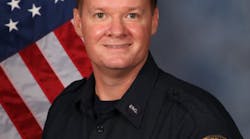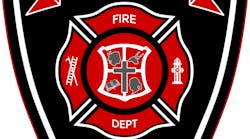In fiscal year 1998, Congress recognized the need for further efforts to address the continuing national problem of occupational firefighter fatalities, and funded the National Institute for Occupational Safety and Health (NIOSH) to conduct independent investigations of firefighter line-of-duty deaths. NIOSH is a unit of the U.S. Centers for Disease Control and Prevention (CDC).
The NIOSH Firefighter Fatality Investigation and Prevention Program conducts investigations of firefighter line-of-duty deaths to formulate recommendations for preventing future deaths and injuries. The program does not seek to determine fault or place blame on fire departments or individual firefighters, but to learn from these tragic events and prevent future similar events.
Firehouse® Magazine is pleased to join with NIOSH in presenting this valuable information. It is important to note that while some incidents that will be described here occurred several years ago, the information presented is valuable today. The accounts that follow are summaries of NIOSH investigations. The complete reports are available on the program website at www.cdc/niosh/firehome.html.
MISSOURI
Two Career Firefighters Die in Four-Alarm Fire at Two-Story Brick Structure (Case F2002-20)
On May 3, 2002, a 38-year-old male career firefighter (Victim 1) died after he became lost and ran out of air while searching for a missing 38-year-old male career firefighter (Victim 2) at a four-alarm, two-story structure fire. Victim 2 was identified as missing when he failed to respond to a member accountability roll call (MARC). Victim 1 reentered the structure to search for Victim 2 as part of a search-and-rescue team. Shortly thereafter, Victim 1 became lost and radioed Mayday several times. After extensive searches for both victims, they were removed from the structure and provided medical attention on the scene. They were then transported by EMS to a local hospital. Victim 1 was pronounced dead on arrival and Victim 2 was pronounced dead the following day.
CAUSE OF DEATH
According to the coroner’s report, the cause of death for both victims was smoke inhalation. The carbon monoxide level in the blood was noted to be less than 10% in Victim 1 and 47.9% in Victim 2. Victim 1 had third-degree thermal injury over 40% of his body, and Victim 2 had third-degree thermal injury over 18% of his body surface area.
RECOMMENDATIONS
- Fire departments should ensure that team continuity is maintained.
- Fire departments should ensure that a rapid intervention team is established and in position immediately upon arrival.
- Fire departments should ensure that the incident command system is fully implemented at the fire scene.
- Fire departments should ensure that firefighters, when operating on the floor above the fire, have a charged hoseline.
- Fire departments should instruct and train firefighters on manually activating their PASS device when they become lost, disoriented or trapped.
- Fire departments should ensure that a separate incident safety officer (ISO), independent from the incident commander, is appointed.
- Fire departments should ensure that standard operating procedures (SOPs) and equipment are adequate and sufficient to support the volume of radio traffic at multiple-alarm fires.
- Fire departments should ensure that self-contained breathing apparatus (SCBA) are properly inspected, used, and maintained to ensure they function properly when needed.
MASSACHUSETTS
Six Career Firefighters Killed in Cold Storage and Warehouse Building Fire (Case F1999-47)
On Dec. 3, 1999, six career firefighters died after they became lost in a six-floor, maze-like, cold storage and warehouse building while searching for two homeless people and fire extension. It is presumed that the homeless people had accidentally started the fire on the second floor sometime between 4:30 and 5:45 P.M. and then left the building. An off-duty police officer who was driving by called Central Dispatch and reported that smoke was coming from the top of the building.
When the first alarm was struck at 6:15 P.M., the fire had been in progress for about 30 to 90 minutes. Beginning with the first alarm, a total of five alarms were struck over a span of one hour and 13 minutes, with the fifth called in at 7:28. Responding were 16 apparatus, including 11 engines, three ladders, one rescue and one aerial, and 73 firefighters. Two incident commanders (IC 1 and IC 2) in two separate cars also responded.
Firefighters from the apparatus responding on the first alarm were ordered to search the building for homeless people and fire extension. During the search efforts, two firefighters (Victims 1 and 2) became lost, and at 6:47, one of them sounded an emergency message. A head count ordered by interior command confirmed which firefighters were missing.
Firefighters who had responded on the first and third alarms were then ordered to conduct search-and-rescue operations for Victims 1 and 2 and the homeless people. During these efforts, four more firefighters became lost. Two firefighters (Victims 3 and 4) became disoriented and could not locate their way out of the building. At 7:10, one of the firefighters radioed command that they needed help finding their way out and that they were running out of air. Four minutes later, he radioed again for help.
Two other firefighters (Victims 5 and 6) did not make initial contact with command nor anyone at the scene, and were not seen entering the building. However, according to the Central Dispatch transcripts, they may have joined Victims 3 and 4 on the fifth floor. At 7:24, IC 2 called for a head count and determined that six firefighters were now missing. At 7:49, the crew from Engine 8 radioed that they were on the fourth floor and that the structural integrity of the building had been compromised. At 7:52, a member from the Fire Investigations Unit reported to the chief that heavy fire had just vented through the roof on the C side.
At 8 P.M., interior command ordered all companies out of the building, and a series of short horn blasts were sounded to signal the evacuation. Firefighting operations changed from an offensive attack, including search and rescue, to a defensive attack with the use of heavy-stream appliances. After the fire had been knocked down, search-and-recovery operations commenced until recall of the box alarm eight days later on Dec. 11, 1999, at 10:27 P.M., when all six firefighters’ bodies had been recovered.
CAUSE OF DEATH
The causes of death as released by the Office of the District Attorney are as follows: Victims 1 and 5 died as a result of severe thermal injuries and exposure to heat and noxious gases; Victims 2, 3, 4 and 6 died of inhalation of smoke, soot and hot gases.
RECOMMENDATIONS
- Fire departments should ensure that inspections of vacant buildings and pre-fire planning are conducted that cover all potential hazards, structural building materials (type and age), and renovations that may be encountered during a fire, so that the incident commander will have the necessary structural information to make informed decisions and implement an appropriate plan of attack.
- Fire departments should ensure that the incident command system is fully implemented at the fire scene.
- Fire departments should ensure that a separate incident safety officer, independent from the incident commander, is appointed when activities, size of fire or need occurs, such as during multiple-alarm fires, or responds automatically to pre-designated fires.
- Fire departments should ensure that standard operating procedures (SOPs) and equipment are adequate and sufficient to support the volume of radio traffic at multiple-alarm fires.
- Fire departments should ensure that incident command always maintains close accountability for all personnel at the fire scene.
- Fire departments should use guide ropes/tag lines securely attached to permanent objects at entry portals and place high-intensity floodlights at entry portals to assist lost or disoriented firefighters in emergency escape.
- Fire departments should ensure that a rapid intervention team is established and in position upon their arrival at the fire scene.
- Fire departments should implement an overall health and safety program such as the one recommended in NFPA 1500, Standard on Fire Department Occupational Safety and Health Program.
- Fire departments should consider using a marking system when conducting searches.
- Fire departments should identify dangerous vacant buildings by affixing warning placards to entrance doorways or other openings where firefighters may enter.
- Fire departments should ensure that officers enforce and firefighters follow the mandatory mask rule per administrative guidelines established by the department.
- Fire departments should explore the use of thermal imaging cameras to locate lost or downed firefighters and civilians in fire environments.
- Manufacturers and research organizations should conduct research into refining existing and developing new technology to track the movement of firefighters on the fireground.





